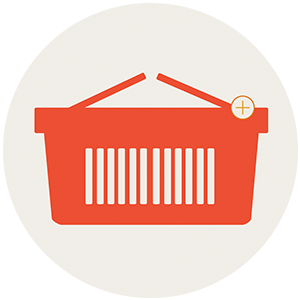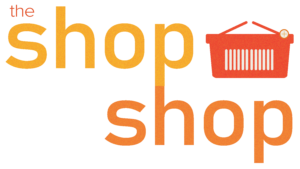In a nutshell, Shopify’s Horizons update doesn’t reinvent eCommerce CMS as much as keep it in step with competitors. While I appreciate some of the practical, long-awaited functional updates, I’m less interested in the AI panacea mindset that pervades this release.
For my clients, I’m suggesting that we key in on the updates to Point of Sale and Checkout. There are some previous limitations that may be quickly fixed with this update.
About Shopify’s Horizons Update
Shopify just released Horizons, a new design foundation for their sites. Key features include the ability to nest blocks and drag/drop more elements. As part of this, they’ve released 10 new themes with the promise that you can use AI prompts to create the blocks inside those themes.
10 New Themes
- Dwell
-
Savor
-
Horizon
-
Heritage
-
Atelier
-
Fabric
-
Vessel
-
Pitch
-
Ritual
-
Tinker
They’re all aesthetically pleasing and seem to follow best practices, although I haven’t tested any out. Also, some of them have the same names as old themes, so I’m assuming this is just some new features layered on existing themes.
Top NEW Editor Features
- Hover-to-preview in block picker
- Categories for blocks and sections
- AI block generation
- One-click text editing
- Simplified sidebar with conditional settings
- Sections collapsed by default
- Right-click for all shortcuts
- Custom names for blocks and sections
- Copy and paste blocks and sections
- Richer predictive search
- More interactive product cards
- Discount code entry in cart
Also, their analytics section is enhanced with “Sidekick” — a little AI helper that is supposed to help analyze your data based on queries and prompts. Think Clippy for Shopify data. It’s also an AI image generator which honestly seems like just another way to make real small business websites like like they are fraudulent phishing sites. Their example in the deck shows someone making fake images of their “desert retreat” location.
For retailers, the POS system has been tweaked to allow more brand customization. The update also allows you to process mixed-fulfillment orders in a single transaction, so customers can take items home while shipping others. Also, within online checkout, you can adjust your Thank you and Order status pages using a guide that’s tailored to your store’s apps and existing customizations.
New Marketing Tools and Features
- Create a single discount that can be applied across products, orders, and shipping with select discount apps.
- Create and edit segments with assistive features, keyboard shortcuts, and improved date filtering.
- Optimize how your store shows up in AI shopping chats by customizing the FAQ that AI agents can use to answer questions.
- Quickly target customers with pre-built segmentation templates for common use cases like language preference, purchase history, and location.
- Create a geographic segment using a plain-language address (e.g., 151 O’Connor St.) instead of your retail locations or the latitude and longitude.
- Easily find the right marketing automation template to optimize your campaign with the new search, sort, and filtering options.
- Catch typos, broken links, and delivery issues by canceling email campaigns even after they’ve started sending.
- Optimize your email designs with the ability to adjust the padding, save footer customizations, and choose between a compact or expanded footer.
- Remind customers of their store credit balance by including it in marketing emails or by displaying it on your online store.
- Edit custom metafields and Shopify Forms will automatically reflect your changes, keeping customer data accurate and consistent.
- Manage and measure your marketing across channels with Campaigns, as well as generate QR codes, shareable links, and manage UTMs directly in the admin.
- Toggle the “Buy again” button on or off to choose whether it shows up on the Order Status page.
- See your own branded URL on the customer login and account page.
Updated Shop App
- Mirror your online store’s product detail pages on Shop with swatches and subscriptions.
- Shoppers can create, share, discover, and collaborate with others on collections of saved products.
- Give customers more detailed tracking information, with easy access to pay customs and reschedule delivery.
- Show customers their store credit and loyalty points in the Shop app and in checkout with Shop Pay authentication.
Shipping Changes
- Track a single inventory transfer in multiple shipments
- Manage shipping, local delivery, in-store pickup, and pickup points for each location in a single view to easily activate, deactivate, or configure options.
- Transfer stock between locations more efficiently with barcode scanning.
- Have item quantities automatically split across multiple locations when one location doesn’t have enough stock to fulfill it.
- Save time fulfilling orders—buy and print up to 250 shipping labels at once.
- Search and sort in the updated transfers page that now includes new filters and shipment details.
- Charge customers a single flat shipping rate when items ship from multiple locations within a single shipping profile.
- Choose from more third-party fulfillment partners, including Flexport, ShipBob, Shipfusion, and ShipMonk, and track inventory levels, delivery times, and more—all in the Shopify Fulfillment Network app.
- Fulfill orders faster with Purolator in Canada, SEUR in Spain, and BRT in Italy.
- Select preferred carriers and mail classes, and turn off ones that you don’t use.
- Ensure your sales reports and taxes are only updated after you confirm the return with a new processing step.
Admin and Operations Changes
- Issue refunds as store credit directly in the admin, regardless of the original payment method.
- Modify orders that contain subscriptions and pre-orders before shipping.
- Streamline your backend global operations with permissions and tools that make it easy for store owners and administrators to manage all their business entities in one place. Exclusive to Plus.
- Optimize your Core Web Vitals by diving into detailed page-level analytics to diagnose performance issues.
- Access more analytics features in the updated experience, including benchmarks and the Customer cohort analysis report.
- Easily connect your domain to your Shopify store with step-by-step guidance and real-time feedback during setup.
- Accept contactless payments directly on your phone now that Tap to Pay has expanded from the POS to the Shopify mobile app. US only.
- Navigate the Shopify mobile app with fewer taps, clearer menus, and redesigned headers.
- Get smarter loading indicators that appear only when needed in an admin that loads 30% faster.
- Easily navigate between pages with dynamic back buttons and breadcrumbs in the admin.
- Quickly find anything in your settings—like payment methods, shipping, and taxes—with a dedicated settings search on desktop and the Shopify mobile app.
- Get fast, customizable reporting and run ShopifyQL queries on the go with the new analytics experience in the Shopify mobile app.
- Leverage Shopify Tax automated filing to simplify sales tax management for additional channels including Shop, Facebook and Instagram.
- Reduce the cost of borrowing with monthly-fee loans when it’s paid back early with Shopify Capital.
- Upload CSVs to easily import your products, customers, and inventory from platforms, such as Square, WooCommerce, Etsy, Wix, Amazon, Ebay, Clover, and Lightspeed R & X Series.
Shopify Flow Changes
- Build automations faster with real sample data for each variable, like “Product handle: digital-gift-card,” removing the guesswork from creating workflows.
- Better troubleshooting in Shopify Flow with detailed step data and retained logs for 14 days. Also, search by order IDs, tags, and more.
- Improve list handling with a more flexible “For each” loop in Shopify Flow that now allows nested loops and multiple actions inside each loop.
Advantages of Using Shopify for Small Shops
Typically, I suggest Shopify for small shops for a few key reasons.
1. Ease of Use
Shopify is renowned for its user-friendly interface that simplifies the process of setting up and managing an online store. You don’t need to be a tech expert to create a visually appealing and fully functional website. Its drag-and-drop builder and intuitive dashboard make it accessible for small shop owners who may not have a dedicated IT team.
2. Comprehensive Features
With Shopify, you have access to a wide range of features that can cater to various business needs. From inventory management and payment processing to marketing tools and analytics, Shopify provides an all-in-one solution. This comprehensive suite of features allows small businesses to operate efficiently and focus on growth.
3. Scalability
Starting with a small shop is often the first step, but as your business grows, so do your needs. Shopify offers scalability, allowing you to expand your store’s capabilities with more advanced features and higher-tier plans. This adaptability ensures that Shopify can grow with your business, accommodating increased traffic and sales.
4. Reliable Support
Shopify offers 24/7 customer support, which is invaluable for small business owners who might need assistance at any time. Whether it’s a technical issue or a question about optimizing store performance, Shopify’s support team is readily available to help.
With this in mind, I think the Horizons update stays true to that core purpose while sometimes being distracted from its key mission. Shopify’s commitment to innovation is evident with the Horizon update. This significant update aims to enhance the experience for both sellers and customers, integrating cutting-edge technology and new features.
Key Features of the Horizon Update
- The Horizon update brings improvements in site speed and performance, ensuring that your store loads quickly and efficiently. This is crucial for reducing bounce rates and improving user experience, ultimately leading to higher conversion rates.
- With Horizon, Shopify introduces more customizable themes and design options, allowing store owners to tailor their websites to better reflect their brand identity. This level of personalization can help differentiate your business from competitors and attract more customers.
- The update also focuses on integrating with emerging technologies like augmented reality (AR) and virtual reality (VR), providing an immersive shopping experience. This feature can help small shops offer a unique customer experience, setting them apart in a crowded market.
However, I don’t know that Sidekick and similar tools will get clients as much insight as something more focused and curated. You have to know what questions to ask to get the best answers. Hopefully, over time, common prompts will enhance the insights and give people more of what they really need — focused and experienced marketing direction and eStore strategy.
Understand Shopping Trends
We’re dropping our next newsletter in July 2025. Sign up for exclusive freebies, giveaways, and industry insights.


